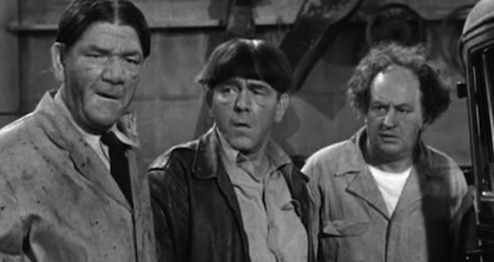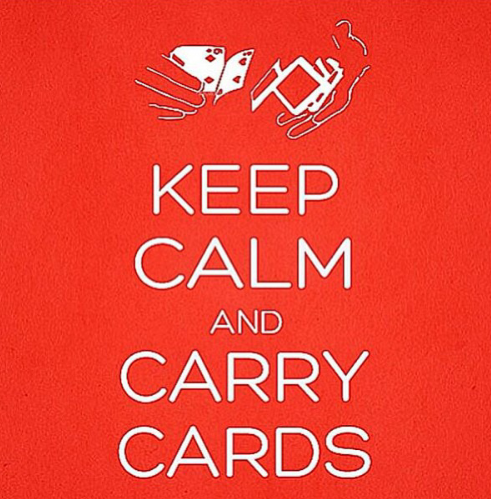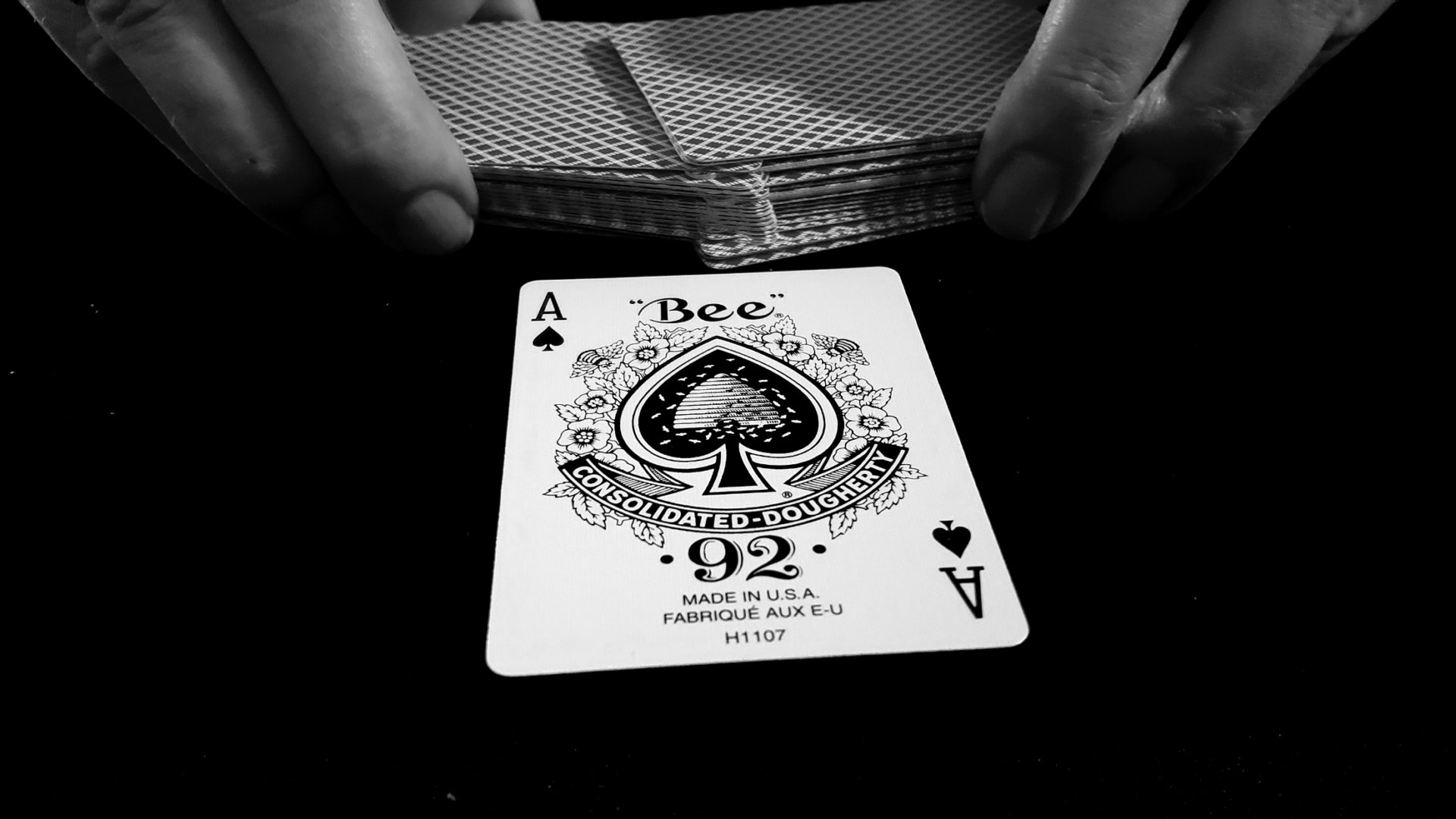The Three Stooges and Magic
[Earlier versions of this appeared in The Three Stooges Journal (2002) and M-U-M (2006)]
Two of my special interests in life are magic and the Three Stooges. It dawned on me one day that those interests are not mutually exclusive…
The Three Stooges Journal of Summer 1990 (Volume 54, page 14) shows a photograph from the 1920’s of Moe, Shemp, and Ted Healy publicizing the Ringling Brothers Circus. Also pictured in the shot are the Hazel Mangean Girls, and magician Fred Keating. Fred Keating (1897-1961) went on to not only a career in magic, but also some cinema. Although his catalog of works include non-Stooge movies such as Eternally Yours, a film starring David Niven as a dapper magician, Keating also worked with Stooge co-stars Joan Crawford in I Live My Life (1935) and Billy Gilbert in Tin Pan Alley (1940). And most notably for our purposes, Fred Keating crossed paths with the Stooges again in 1934, in The Captain Hates the Sea. He played the role of Danny Checkett, the character who refers to Larry as “Mocksin”.
Serious fans of the Stooges know that Moe married his wife Helen in 1925 after a three-year courtship. Very serious fans know that Helen’s family already had experience with show business: Her cousin was Harry Houdini (1874–1926), history’s most famous magician*, and arguably the entertainment world’s first superstar. Certainly he set the precedent for single-named stars as Cher, Madonna, and Prince, by insisting on being known only as ‘Houdini’.
But even Stooge fanatics might not know of Helen’s cousin’s other tie to film comedy. A friend of the Joe Keaton family, Houdini was the godfather of Joseph Francis Keaton. Houdini is the one who gave the younger Joe a nickname that stuck forever: ‘Buster’. Although there are varying accounts of this story, most sources point to its credibility, including the consistent recounting by Keaton himself. Incidentally, Keaton’s younger brother Harry was named after Houdini, and Houdini also gave this sibling his nickname—Jingles.
A final tie between the Stooges and Houdini comes in the dates of demise. One of the things Houdini is famous for is the date of his death—Halloween, 1926. Certainly it is of interest that Helen Howard also passed away on Halloween, in the year 1975.
Professional magicians also had connections with Joe Besser. Joe, born and raised in St. Louis, was enchanted by the performances of Howard Thurston (1869-1936), and went to see him five consecutive years when Thurston toured St. Louis. The fifth year, Joe actually got to perform as a plant (or, stooge) in the audience. Each year Joe went backstage and asked Thurston for a job. After being rejected the fifth time, Joe took matters into his own hands, and stowed away on one of the show’s freight cars (unknowingly hiding next to an occupied lion’s cage). After he was discovered when the troupe arrived in Detroit, Thurston caved in and hired Joe as part of the act.
After Joe blew the timing on a routine, the audience reacted with laughter. Initially angry, Thurston sensed the value of comedy in his show, and kept Joe in the act as comic relief. Joe worked for Thurston for approximately three and a half years (December 1919 – June 1923) before he felt it was time to move on.
After leaving Thurston’s show, Joe worked for another magician, Adelaide Herrmann (1853-1932). Adelaide was the widow of magician Alexander Herrmann, known as The Great Herrmann. Following Alexander’s death in 1896, Adelaide carried on the act, first with Alexander’s nephew Leon, then by herself. Madame Herrmann performed the act until she was 75 years old. Unfortunately, Joe did not find it easy to work with Madame Herrmann, and left after only a couple of weeks.
A professional magician also worked with the Stooges in The Outlaws IS Coming! The hosts of TV shows that were airing the Stooge shorts played several of the characters. Paul Shannon was one of these, playing the role of Wild Bill Hickok in the film. Shannon was the host of Pittsburgh’s Adventuretime. He managed to display his magic on that show as The Great Mysto, a pantomime character.
Penn & Teller, also need mention here. Penn Jillette was interviewed in the Three Stooges Journal, pages 18-19, Volume 58, Summer 1991. In this interview, Penn reveals his appreciation for the work of the Stooges, and the way they portray friendship in their films. His take on the violence in the films as an expression of affection among the Stooges is worth a read.
On film, the Stooges flirted with magic several times in their work. Some were direct associations with magicians; some were ancillary to magic proper. These magic-related yet not-quite-magic-encounters include the witch doctors in Three Missing Links (1938) and Hula-La-La (1951), the hypnotist in Hokus Pokus (1949) and Flagpole Jitters (1956), the genie in Three Arabian Nuts (1951), and the card-sharking in poker games in Whoops, I’m An Indian (1936) and Goofs & Saddles (1937).
For magicians proper, we can look to five Columbia shorts, and one of the live wraparounds from the New Three Stooges.
The New Three Stooges series was an animated one. 156 cartoons were produced, and these were shown in conjunction with some live footage of Moe, Larry, and Curly-Joe. There were 40 of these live wraparounds, one of which (#40) depicted the Stooges as magicians performing tricks for children.
In A Plumbing We Will Go (1940) the Stooges are trying to evade Officer Kelly (Bud Jamison). They hide in the ‘magic’ cabinet of traveling magician Professor Bilbo, played by Monty Collins. In one shot, Curly is seen in the cabinet trying to make time with Bilbo’s attractive female assistant. At the end of the film, Professor Bilbo and his magic cabinet show up again, providing the means of escape for the Stooges, as well as producing the squad of police, both on foot and on motorcycles.
Fiddlers Three (1948) depicts the Stooges attempting to hide inside one of Mergatroyd the Magician’s (Phil Van Zandt) stage props. Inside the box, the Stooges are subjected to various bits of mayhem from a saw blade and swords. Mergatroyd employs the box to demonstrate to the king (Vernon Dent) that his magic is powerful enough to return the king’s daughter (Virginia Hunter) to safety. Mergatroyd abducted the princess in the first place, so his plot seems foolproof. Of course, that doesn’t make it Stooge-proof, and Moe, Larry, and Shemp interfere enough to save the day.
In Don’t Throw That Knife (1951) Mr. Wycoff (Dick Curtis) and his wife Lucy Wycoff (Jean Willes) have a vaudeville illusion act. The Stooges are faithfully attempting to carry out their duties as census takers, and call upon the Wycoff’s apartment. While interviewing Mrs. Wycoff, Mr. Wycoff returns. The Stooges hide after Mrs. Wycoff warns them that her jealous husband will kill them if he finds them there. Of course, he does find them, and demonstrates his knife-throwing prowess on Moe and Shemp. Quick-thinking (?) Larry saves the day in this one.
Musty Musketeers (1954) is a remake of Fiddlers Three. Once again Mergatroyd the Magician (Phil Van Zandt) and his magic box are the focal points for the magic connection. The scenes that depict it are identical to Fiddlers Three.
Finally, Loco Boy Makes Good (1942) has Curly mistakenly putting on Baldo the Magician’s (Vernon Dent) coat before entertaining guests in the hotel showroom. Birds, mice, a rabbit, silk scarves, and a squirting flower all combine to make a most memorable and enjoyable evening for the guests. The magician’s coat gag was lifted by screenplay writer Clyde Bruckman from Harold Lloyd’s 1932 film, Movie Crazy, which Bruckman directed. Lloyd sued Columbia in 1946, winning the case. In the ensuing years after this, Bruckman’s professional life deteriorated, until in 1955 he committed suicide with a pistol borrowed from an old friend.
To provide one final connection of interest in this article, that friend turned out to be…Buster Keaton.
* This does not include fictional characters, such as Merlin and Harry Potter.
Resources:
Buster Keaton Remembered. Eleanor Keaton & Jeffrey Vance. Harry N. Abrams, Inc. Publishing. (2001)
The Columbia Comedy Shorts: Two-Reel Hollywood Film Comedies, 1933-1958. Ted Okuda with Edward Watz. McFarland & Company, Inc., Publishers. (1986)
The Comic Mind: Comedy and the Movies, (2nd Edition). Gerald Mast. University of Chicago Press. (1979)
The Complete Three Stooges. Jon Solomon. comedy III productions, inc. (2001)
Conjuring. James Randi. St. Martin’s Press. (1992)
Genii: The Conjurors’ Magazine. Volume 63, Number 8. (August, 2000)
Keaton. Rudi Blesh. MacMillan Company. (1966)
Moe Howard & The 3 Stooges. Moe Howard. Citadel Press. (1977)
Not Just a Stooge. Joe Besser with Jeff & Greg Linberg. Excelsior Books, Inc. (1984)
The Three Stooges Journal. Volume 54, Summer 1990.
The Three Stooges Journal. Volume 58, Summer 1991.
The Three Stooges Scrapbook. Jeff Lenburg, Joan Howard Maurer, & Gregg Lenburg. Citadel Press. (1982)

Curly, Moe, & Larry

Shemp, Moe, & Larry

Moe, Larry, & Joe

